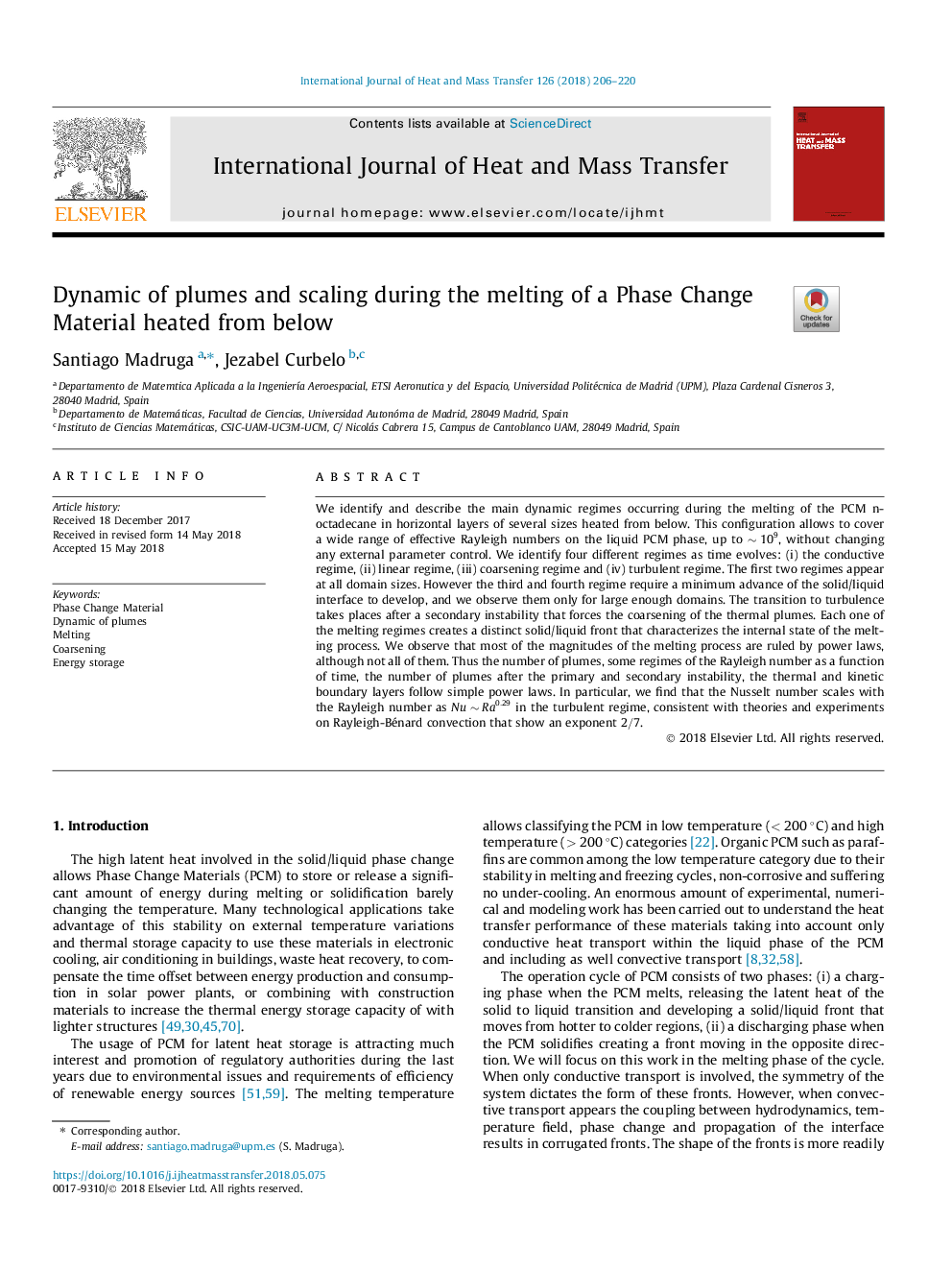| Article ID | Journal | Published Year | Pages | File Type |
|---|---|---|---|---|
| 7053866 | International Journal of Heat and Mass Transfer | 2018 | 15 Pages |
Abstract
We identify and describe the main dynamic regimes occurring during the melting of the PCM n-octadecane in horizontal layers of several sizes heated from below. This configuration allows to cover a wide range of effective Rayleigh numbers on the liquid PCM phase, up to â¼109, without changing any external parameter control. We identify four different regimes as time evolves: (i) the conductive regime, (ii) linear regime, (iii) coarsening regime and (iv) turbulent regime. The first two regimes appear at all domain sizes. However the third and fourth regime require a minimum advance of the solid/liquid interface to develop, and we observe them only for large enough domains. The transition to turbulence takes places after a secondary instability that forces the coarsening of the thermal plumes. Each one of the melting regimes creates a distinct solid/liquid front that characterizes the internal state of the melting process. We observe that most of the magnitudes of the melting process are ruled by power laws, although not all of them. Thus the number of plumes, some regimes of the Rayleigh number as a function of time, the number of plumes after the primary and secondary instability, the thermal and kinetic boundary layers follow simple power laws. In particular, we find that the Nusselt number scales with the Rayleigh number as Nuâ¼Ra0.29 in the turbulent regime, consistent with theories and experiments on Rayleigh-Bénard convection that show an exponent 2/7.
Related Topics
Physical Sciences and Engineering
Chemical Engineering
Fluid Flow and Transfer Processes
Authors
Santiago Madruga, Jezabel Curbelo,
